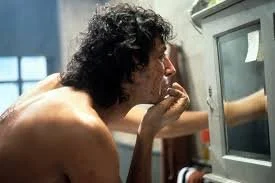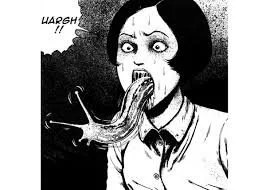Body Horror and the Art of Falling Apart
Recently, I saw David Cronenberg’s cult classic The Fly as part of Disability Pride Month at the Picturehouse.
I’d seen the film before and was excited to share it with a friend who hadn’t. I warned him to expect disgust — this is a film that pushes body horror to its limits. But what I hadn’t remembered was how sad it is. I left the cinema thinking not just about horror, but about the body — and what it means to watch yourself fall apart.
The Fly, 1986
In the film, Jeff Goldblum plays an obsessed scientist on the verge of perfecting teleportation. But when he tests his invention, he accidentally merges his body with a fly. Slowly and grotesquely, he begins to transform. This isn’t a superhero origin story — it’s a slow, painful decay. His ears fall off. He vomits on his food to digest it. It’s horrific, but deeply human: it taps into our fear of illness, loss of control, and physical deterioration.
While I love body horror as a genre, I don’t usually draw it. Artists like Junji Ito do it brilliantly — but for me, it feels too far removed from reality. I prefer the build up of tension in a piece rather than the shocking finale. What I do explore in my work is the fear of mortality. Skulls and skeletons often haunt the backgrounds of my images. My pieces are usually set in the home and teeter on the edge of unease — whether it’s a bath full of scissors or a bowl full of snakes.
Junji Ito, Slug Girl
The Fly has really lingered with me. I want to thank the brilliant host at the Picturehouse for her thoughtful discussion and deep research.
She raised difficult and important topics — euthanasia, abortion, and how these issues are framed in relation to disability. The discussion also explored neurodivergence, drawing parallels between the character’s transformation and experiences of being misunderstood or othered. It elevated the film to another level, and made me want to dig deeper into other horror films and the symbolism behind them.
What horror stories have made you reflect on your own body — or your own fears?

